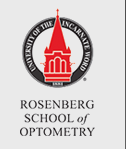Medical Subject Headings
COVID-19; Ophthalmology; Patient Care
Abstract
Purpose: To analyze the cohort of clinical patients seen during the COVID-19 pandemic shutdown at Emory Eye Center in comparison with prior weeks.
Method: We conducted a retrospective chart review from three outpatient clinical sites over a period of eighteen weeks, which covered pre-COVID-19 dates as well as the dates of when our clinics were closed near the beginning of the COVID-19 pandemic. We utilized data from providers assigned to daily triage coverage for in-person exams. Primary diagnosis and visit type data were extracted to look for trends and commonalities among urgent or time-sensitive patients.
Results: For the nine weeks prior to clinic closure, there were 11,700 primary visit codes. During the nine-week closure, there were 1,624 in-person visit codes. We were able to observe some trends for descriptive purposes. Diagnoses of patients seen in person with higher frequency during the closure included vitreous disorders (i.e., posterior vitreous detachment), corneal ulcer, optic nerve disorders, idiopathic intracranial hypertension and post-operative care. We also looked at our telehealth visit numbers. However, there were very few telehealth visits (n=25), which rendered the telehealth analysis statistically insignificant.
Conclusion: Through an analysis of the pool of non-COVID patients who were seen during the shutdown in our clinics via in-person urgent or time-sensitive exams, we were able to observe a breakdown of visit type and diagnosis. A comparison of those patients with the distribution seen in person during the previous nine weeks was reviewed. Although our numbers for data analysis during closure were too small to devise an evidence-based algorithm, there were still several lessons we learned from this first wave of the COVID-19 pandemic such as: 1) how to predict which patients may be more time-sensitive or urgent from a pre-determined list of diagnoses; and 2) how to immediately establish an ophthalmologist/optometrist (MD/OD) daily triage coverage schedule. We found it difficult to successfully incorporate a significant number of telehealth visits because most eye conditions, which were already deemed urgent by our call center, were in general considered conditions that required further evaluation by a provider. We hope that these take-away lessons will further improve ophthalmic care for any future pandemic or widespread closure.
Recommended Citation
Moore Y, Ward L, Gulaid F, Primo SA. Ocular Characteristics of Non-COVID-19 Patients: A Retrospective Study of Time-Sensitive Ophthalmic Care during the Pandemic. Optometric Clinical Practice. 2021; 3(2):6. https://doi.org/10.37685/uiwlibraries.2575-7717.3.2.1018
Creative Commons License

This work is licensed under a Creative Commons Attribution 4.0 International License.
Digital Object Identifier (DOI)
10.37685/uiwlibraries.2575-7717.3.2.1018
Included in
Adult and Continuing Education and Teaching Commons, Health and Physical Education Commons, Optometry Commons, Other Education Commons, Other Medicine and Health Sciences Commons, Other Teacher Education and Professional Development Commons

